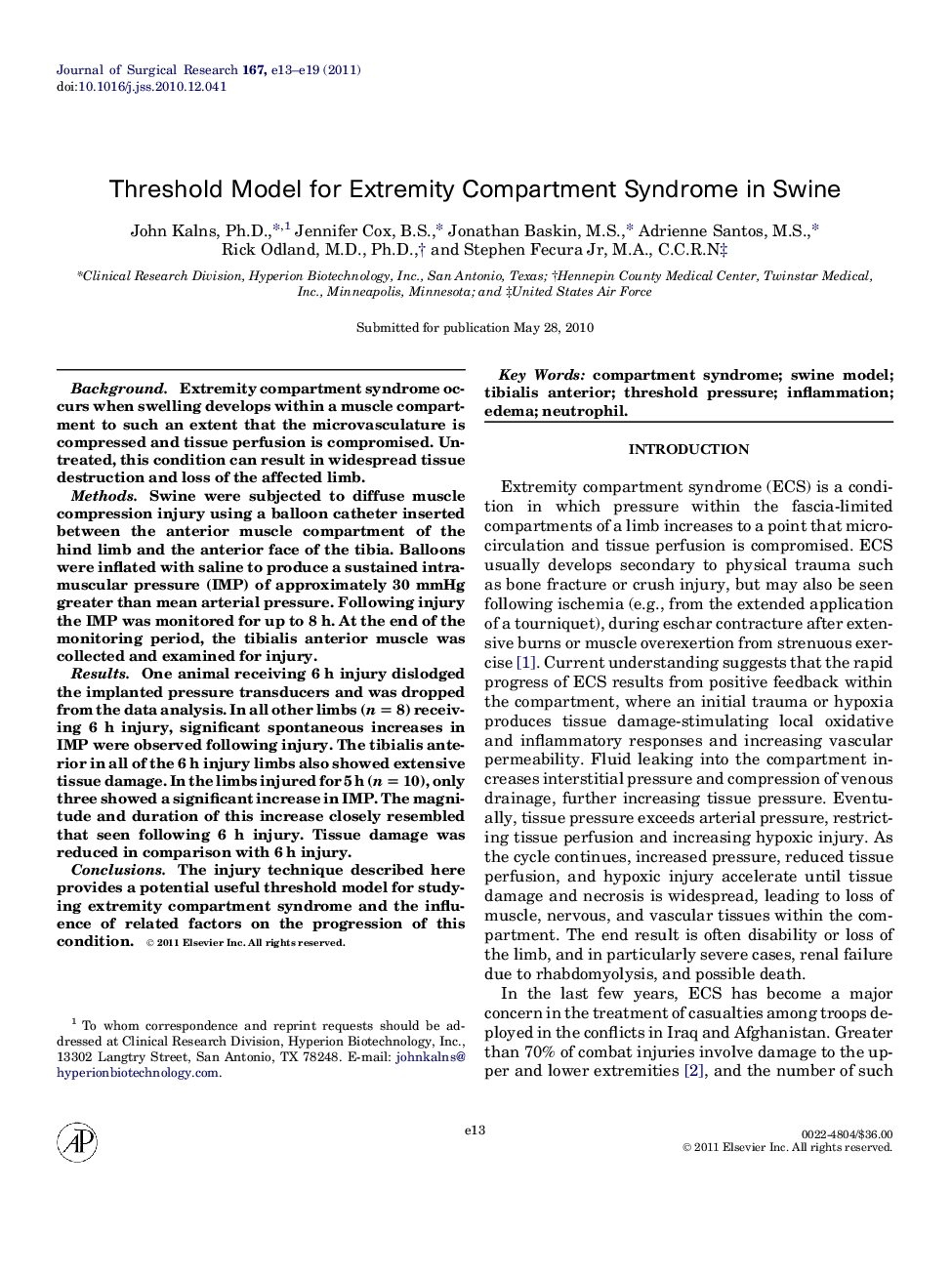| Article ID | Journal | Published Year | Pages | File Type |
|---|---|---|---|---|
| 4302837 | Journal of Surgical Research | 2011 | 7 Pages |
BackgroundExtremity compartment syndrome occurs when swelling develops within a muscle compartment to such an extent that the microvasculature is compressed and tissue perfusion is compromised. Untreated, this condition can result in widespread tissue destruction and loss of the affected limb.MethodsSwine were subjected to diffuse muscle compression injury using a balloon catheter inserted between the anterior muscle compartment of the hind limb and the anterior face of the tibia. Balloons were inflated with saline to produce a sustained intramuscular pressure (IMP) of approximately 30 mmHg greater than mean arterial pressure. Following injury the IMP was monitored for up to 8 h. At the end of the monitoring period, the tibialis anterior muscle was collected and examined for injury.ResultsOne animal receiving 6 h injury dislodged the implanted pressure transducers and was dropped from the data analysis. In all other limbs (n = 8) receiving 6 h injury, significant spontaneous increases in IMP were observed following injury. The tibialis anterior in all of the 6 h injury limbs also showed extensive tissue damage. In the limbs injured for 5 h (n = 10), only three showed a significant increase in IMP. The magnitude and duration of this increase closely resembled that seen following 6 h injury. Tissue damage was reduced in comparison with 6 h injury.ConclusionsThe injury technique described here provides a potential useful threshold model for studying extremity compartment syndrome and the influence of related factors on the progression of this condition.
